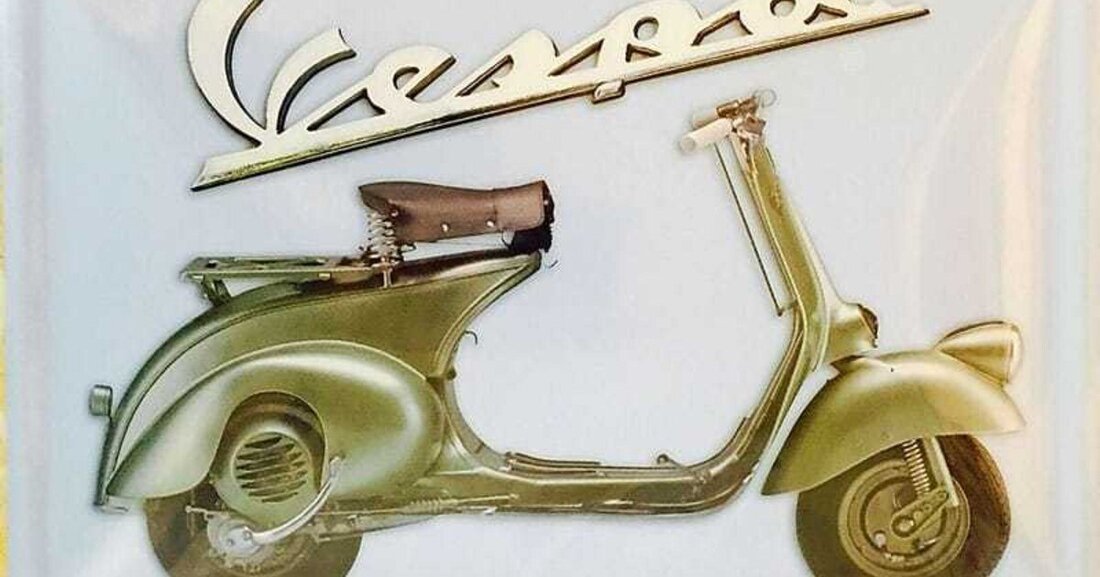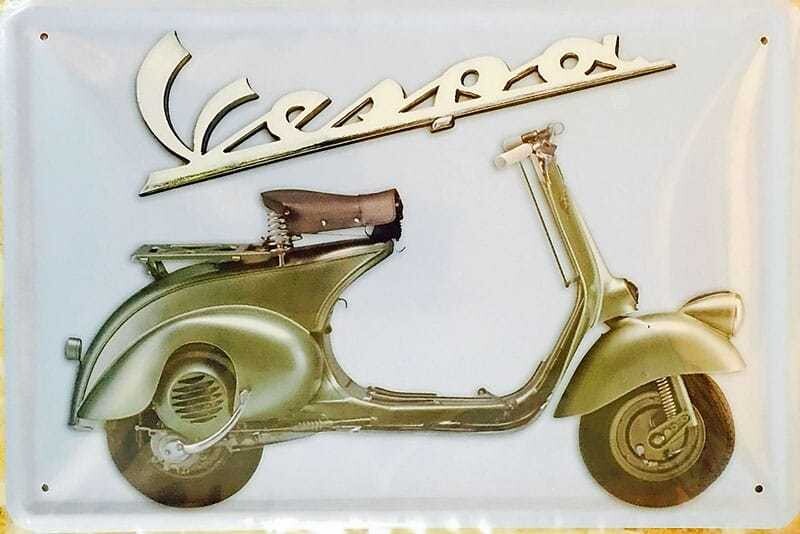And the vesps sting forever
When you approach a topic with a largely unbiased approach, the result is often astonishing, if not brilliant. For example, when an aircraft designer tries out a motorized two-wheeler. This is exactly the origin story of the legendary Vespa scooter, which turns 70 this year.

And the vesps sting forever

Shortly after the Second World War, pretty much everything was in short supply in Italy, but especially inexpensive mobility. No wonder that companies such as the radio manufacturer Ducati began to build auxiliary motors for bicycles. The Piaggio Air aircraft factory was also looking for a concept like this that would not only be easy to sell, but also one that could be manufactured with the available resources. The flight technician Corradino D’Ascano was commissioned by the company owner Enrico Piaggio to develop a motorized two-wheeler. D’Ascano actually hated motorcycles, they only got you dirty, and he actually wanted to make a living in the emerging helicopter technology. But since he only had the alternative of producing pots or similar household items or even a vehicle, he developed a completely new concept in an astonishingly short time. The motto was to get from A to B cleanly and comfortably, almost like in a car. Therefore, the engine disappeared under a metal hood, there was no greasy chain (the rear wheel was blocked directly to the engine) and of course a free entrance to enable the ladies, who at the time were almost exclusively in skirts, to drive. In addition to the drive unit swing arm, the concept of the sheet metal pressing frame was also an ingenious move; it enabled the use of the existing tools and was also extremely stable. The one-sided suspension of the two (interchangeable) wheels came from aviation technology; the landing gear of Piaggio war planes was the inspiration here. From then on, changing a wheel was as easy as with a car; carrying a spare wheel made the driver more independent on the roads that were still heavily riddled with horseshoe nails at the time.
From Paperino to Vespa
The first design wasn't exactly a thing of beauty with its 90 cc engine, which is why the prototype was called "Paperino" (Donald Duck) by the Piaggio workers. Only the second draft, with its slim waist, was convincing in terms of design and was christened “Vespa”, the wasp. The ingenious simplicity and details such as a manual transmission, which also protected beautiful women's shoes, ensured rapid spread, and not just in Italy. There had certainly been similar concepts years before, such as the Lomos chair bike from the 1920s or the Neracar, built shortly afterwards in the USA. However, these vehicles lacked the consistency of the Vespa and of course the right environment.
In the 1950s, the raging insect also became known north of the Alps; in Germany it was built under license and in India without a license. In 1963, the V 50 Special was the first moped with the same design, which young people of both sexes immediately fell for. In the meantime, the “big ones” had reached 160 and 180 cm³, and these scooters were able to hold their own very well even in the general decline of two-wheelers during this time. When another two-wheeler boom spread from the USA to Europe in the 1970s and 1980s, the Italians were still at the forefront. The Vespa had developed into a cult vehicle, there were and still are countless tuning and accessories from which an entire industry makes a living, especially in the mother country of Italy.
Achievements in sports
One reason for their popularity was always their commitment to sports; in the 1950s, the Vesps from Pontedera won a lot of competitions, most of which had their own scooter class. The scooters stood their ground both on and off-road, dominating the Six Days in 1951 and winning nine gold medals. A Vespa team even took part in the infamous Paris-Dakar desert rally and even made it to the finish line. For this purpose, there were always particularly sporty models such as the 90 SS with a spare wheel and additional tank that functioned as a knee joint or the T5 with a particularly fast engine. The basic concept of the indestructible scooter has always remained the same as D'Ascano drew it in 1946. The sheet metal pressed frame and the drive unit swing arm, as well as the wheel suspensions, are typical trademarks, even if a plumber usually has to be called in after a serious fall. Of course the engines have changed. The indestructible two-stroke engine had to give way to a four-stroke engine with a variator for reasons of noise and emissions; ABS is now a given. The Vespa still has a cult following, even if the purchase price is significantly higher than that of the competition. The resale value is also surprisingly stable. This means a Vespa is a real alternative to buying stocks.

 Suche
Suche
 Mein Konto
Mein Konto